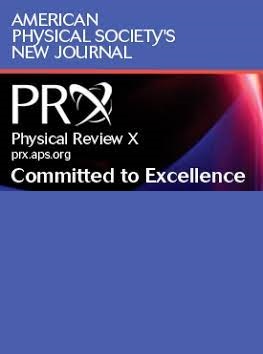利用三频率声学图像深度学习生成培养活细胞的高分辨率图像
IF 15.7
1区 物理与天体物理
Q1 PHYSICS, MULTIDISCIPLINARY
引用次数: 0
摘要
超声显微镜是唯一一种能够长时间监测活细胞形态而不会对细胞造成任何损害的技术,但其较长的波长使人们无法获得高分辨率的细胞图像。在这里,我们提出了一种用于生成高分辨率声学图像的深度学习(DL)方法。通过为相同的细胞准备由许多对声学和光学显微镜图像组成的数据集并对它们进行训练,可以从声学图像生成与光学显微镜相当的高分辨率图像。重要的是,当三层(RGB)图像不仅包含高频(约180 MHz)图像,还包含低频(约100 MHz)图像作为输入图像时,生成的图像最准确,这归功于核的声吸收增强,因为核在这个低频带共振。将三频图像输入的DL方案应用于人间充质干细胞和人诱导多能干细胞,显示出较高的图像生成能力。因此,在24小时以上的时间内,可以获得相同细胞的高分辨率声学显微镜图像,而不会出现光学成像所遇到的典型细胞损伤。2025年由美国物理学会出版本文章由计算机程序翻译,如有差异,请以英文原文为准。
Deep-Learning Generation of High-Resolution Images of Live Cells in Culture Using Tri-Frequency Acoustic Images
Ultrasound microscopy is the only technique that has the ability to monitor live-cell morphology over a long period of time without causing any damage to the cells, but its longer wavelength prevents one from obtaining high-resolution cell images. Here, we propose a deep-learning (DL) method for generating high-resolution acoustic images. By preparing datasets consisting of many pairs of acoustic and optical-microscope images for the same cells and training them, a high-resolution image comparable to optical microscopy is generated from an acoustic image. Importantly, the most accurate images are generated when three-layer (RGB) images containing not only high-frequency (approximately 180 MHz) images but also lower-frequency (approximately 100 MHz) images are used as the input images, which is attributed to enhanced acoustic absorption in the nucleus because the nucleus resonates in this low-frequency band. The DL scheme with the tri-frequency image input is applied to human mesenchymal stem cells and human induced pluripotent stem cells, and the high image-generation capability is demonstrated. As a result, high-resolution acoustic microscopy images are obtained for the same cells for over 24 h, without the typical cell damage encountered using optical imaging. Published by the American Physical Society 2025
求助全文
通过发布文献求助,成功后即可免费获取论文全文。
去求助
来源期刊

Physical Review X
PHYSICS, MULTIDISCIPLINARY-
CiteScore
24.60
自引率
1.60%
发文量
197
审稿时长
3 months
期刊介绍:
Physical Review X (PRX) stands as an exclusively online, fully open-access journal, emphasizing innovation, quality, and enduring impact in the scientific content it disseminates. Devoted to showcasing a curated selection of papers from pure, applied, and interdisciplinary physics, PRX aims to feature work with the potential to shape current and future research while leaving a lasting and profound impact in their respective fields. Encompassing the entire spectrum of physics subject areas, PRX places a special focus on groundbreaking interdisciplinary research with broad-reaching influence.
 求助内容:
求助内容: 应助结果提醒方式:
应助结果提醒方式:


